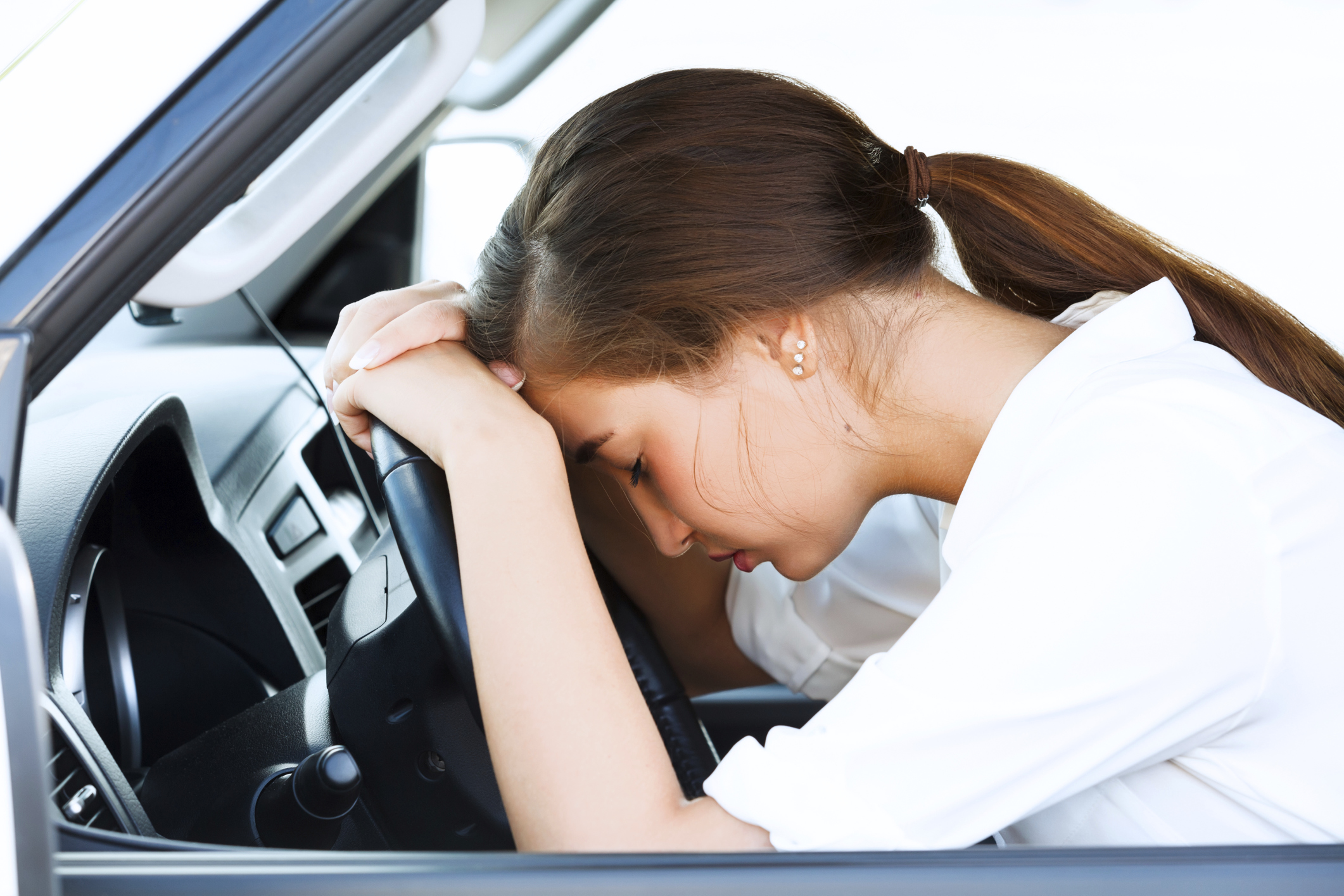
New research from SADD (Students Against Destructive Decisions) and Liberty Mutual Insurance creates fresh urgency around tired-teen driving and the often catastrophic toll a few hours here and there can take (SADD/Liberty Mutual, 2015).
While concerns about young drivers behind the wheel are nothing new, this data frames youth automobile use in a new light: a pervasive “fear of missing out” (FoMO) that may dangerously extend already long, activity-packed days for this particularly vulnerable segment of our population.
Adding to the problem, many of their parents don’t seem to know.
To wit, 61 percent of parents believe their teens are getting adequate rest, while more than half of their children (52 percent) report that they get less than six hours of sleep on weeknights. Even worse, the National Sleep Foundation (NSF) cites one study that found only 15 percent of teens reported sleeping 8.5 hours a night during the week. It recommends that teens sleep at least 8 to 10 hours a night (NSF, 2015a). Some health professionals argue for more.
According to William Horrey, Ph.D., principal research scientist at the Liberty Mutual Research Institute for Safety, “Teens are already at higher risk on the road because they may not have the attentional capacity to deal with all the complexities that come with driving a car. Naturally, sleep deprivation only adds to the potential for catastrophe.”
To raise awareness about the under-reported risks of driving while drowsy, NSF runs an annual campaign, Drowsy Driving Prevention Week (November 1-8, 2015), that offers countermeasures to improve road safety (NSF, 2015b).
As for the young drivers, nearly three quarters (70 percent) profess to driving while tired – with more than half saying they have either fallen asleep or almost done so when operating a motor vehicle (SADD/Liberty Mutual, 2015). The culprits they point to include:
• Busy schedule (extracurricular, school, etc.) – 43 percent;
• Staying up late completing homework – 32 percent;
• Staying up late for social activities – 24 percent; and
• Working late hours during the week – 20 percent.
Another ten percent chalk up their exhaustion to being hungover from drinking or “partying” the night before. But that’s a whole other – if tangentially related – problem. According to the Centers for Disease Control and Prevention, the effects of drowsy driving are similar to driving under the influence. After only 18 hours awake, cognitive impairment equates to a blood alcohol content (BAC) of .05 percent, and after 24 hours awake up to a BAC of .10 percent, which is higher than the legal limit in every state (CDC, 2014).
It is interesting to note that in the SADD/Liberty Mutual Insurance study, among parents who acknowledged their young drivers do not get enough sleep, more than half (51 percent) attribute it to their children's staying up late to read text messages and electronic notifications, also likely reflecting a concern about missing something important if they are asleep.
Of course, the scourge that is driving by exhausted teens has existed since they began using cars in the first place.
And it may be the case especially during the school year when a myriad of demands – academic, athletic, extracurricular and social – might leave young drivers more sleep deprived than they are at other, less-structured times of the year.
In a familiar if tragic tale, eight years ago this fall an early morning crash critically injured two teens and killed a third, all on their way to school and driving on an arguably dangerous stretch of road in Duxbury, Massachusetts (Haggerty, 2007).
The following fall (2008), SADD and Liberty Mutual, in concert with the national Drowsy Driving Prevention Week, released data revealing that teens who get less than eight hours of sleep per night on average are twice as likely as those who do get eight hours to say they have fallen asleep while driving – 20 versus 10 percent (SADD/Liberty Mutual, 2008). That survey also offered interesting insights about some of the factors that affect drowsy driving.
• Teen boys are more likely than teen girls to say they feel safe driving alone when they are tired (29 percent versus 24 percent, respectively), yet teen boys (20 percent) are more likely than teen girls (11 percent) to fall asleep at the wheel.
• Teens who have had a license for less than a year are more likely to fall asleep in the morning (31 percent); for more experienced teen drivers, the reverse is true (55 percent of teens who have been licensed for more than a year say they are most likely to fall asleep at the wheel late at night).
Clearly our societally propelled early school starts for young people, whose development demands more rest, play a role in drowsy driving crashes, injuries and deaths. The National Highway Traffic Safety Administration (NHTSA) reports, “Drowsy driving in 2013 caused about 72,000 crashes, 800 fatalities and 44,000 injuries.” NHTSA goes on to say, “As tragic as these numbers are, they only tell a portion of the story. It is widely recognized that drowsy driving is underreported as a cause of crashes" (NHTSA, 2013).
So, how to keep teens safe?
First, it is critical for parents and teens to recognize the dangerous – even deadly – implications of today’s hyperconnected and overscheduled lifestyles. Thus, implementing ways to reduce risks on the road has never been more important and open, honest conversations about expectations for responsible driving can help. NHTSA promotes its National Teen Driver Safety Week with this advice: “Even if you think they don't hear you, they do … Set the rules before they hit the road” (NHTSA, 2015).
To that end, SADD and Liberty Mutual have created a free downloadable Parent-Teen Driving Contract to serve both as a conversation starter about safety issues and a customized family driving agreement (SADD/Liberty Mutual, 2012).
Such social contracts can go a long way to reinforcing important family driving safety guidelines, including those intended to reduce tired eyes from ruling the road.
© Summit Communications Management Corporation 2015 All Rights Reserved
REFERENCES
CDC. (2014). Drowsy driving: asleep at the wheel. Centers for Disease Control. http://www.cdc.gov/features/dsdrowsydriving/ (17 Oct. 2015).
Duxbury Clipper. (2007). Town green fills in support of DHS teens. September 16, 2007. http://duxburyclipper.com/index.php?option=com_content&view=article&id=455:town-green-fills-in-support-of-dhs-teens&catid=18:news&Itemid=62 (17 Oct. 2015).
Haggerty, R. (2007). Student injured in Duxbury crash improves; driver remains critical; 3d teen in good condition. The Boston Globe. September 16, 2007. http://www.boston.com/news/local/articles/2007/09/16/student_injured_in_duxbury_crash_improves/ (17 Oct. 2015).
NHTSA. (2015). National teen driver safety week. October 18-22, 2015. National Highway Traffic Safety Administration. Traffic Safety Marketing. http://www.trafficsafetymarketing.gov/teens (17 Oct. 2015).
NHTSA. (2013). Research on drowsy driving. National Highway Traffic Safety Administration. http://www.nhtsa.gov/Driving+Safety/Drowsy+Driving (17 Oct. 2015).
NSF. (2015a). Teens and sleep. National Sleep Foundation. https://sleepfoundation.org/sleep-topics/teens-and-sleep (17 Oct. 2015).
NSF. (2015b). DrowsyDriving prevention week. National Sleep Foundation. Drowsydriving.org. http://drowsydriving.org/2015/09/drowsy-driving-preventionweek-november-1-8-2015/ (17 Oct. 2015).
SADD/Liberty Mutual. (2015). New study finds teens’ “fear of missing out” is proving to be dangerous. August 4, 2015. http://sadd.org/press/LM_study.htm (17 Oct. 2015).
SADD/Liberty Mutual. (2012). Parent/Teen Contract: building a guide to safe driving. https://www.libertymutual.com/auto-insurance/teen-driving (17 Oct. 2015).
SADD/Liberty Mutual. (2008). Teens can’t cheat sleep: new Liberty Mutual and SADD survey shows teens reporting less than eight hours of sleep are twice as likely to fall asleep at the wheel. November 10, 2008. http://sadd.org/press/teensleep.htm (17 Oct. 2015).



























